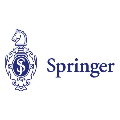The conventional design of wireless communication systems typically relies on established mathematical models that capture the characteristics of different communication modules. Unfortunately, such design cannot be easily and directly applied to future wireless networks, which will be characterized by large-scale ultra-dense networks whose design complexity scales exponentially with the network size. Furthermore, such networks will vary dynamically in a significant way, which makes it intractable to develop comprehensive analytical models. Recently, deep learning-based approaches have emerged as potential alternatives for designing complex and dynamic wireless systems. However, existing learning-based methods have limited capabilities to scale with the problem size and to generalize with varying network settings. In this paper, we propose a scalable and generalizable neural calibration framework for future wireless system design, where a neural network is adopted to calibrate the input of conventional model-based algorithms. Specifically, the backbone of a traditional time-efficient algorithm is integrated with deep neural networks to achieve a high computational efficiency, while enjoying enhanced performance. The permutation equivariance property, carried out by the topological structure of wireless systems, is furthermore utilized to develop a generalizable neural network architecture. The proposed neural calibration framework is applied to solve challenging resource management problems in massive multiple-input multiple-output (MIMO) systems. Simulation results will show that the proposed neural calibration approach enjoys significantly improved scalability and generalization compared with the existing learning-based methods.
翻译:常规无线通信系统的常规设计通常依赖于收集不同通信模块特点的既定数学模型。不幸的是,这种设计不能轻易直接适用于未来的无线网络,其特点是大型超常网络,其设计复杂性规模随网络规模的大小成倍增长。此外,这种网络将有很大的动态变化,因此难以开发全面分析模型。最近,深层次的基于学习的方法已成为设计复杂和动态无线系统的潜在替代方法。然而,现有基于学习的方法在规模上与问题大小相比,与不同的网络设置相适应的能力有限。在本文件中,我们为未来的无线系统设计提出了一个可扩缩和可普遍适用的神经校准框架,其中采用神经网络来校准传统模型算法的投入。具体地说,传统时间效率算法的支柱与深层神经网络相结合,以实现高的计算效率,同时享有更高的性能。现有无线系统表层结构所实施的不均匀的不均匀性属性进一步用于开发一个通用的神经网络架构。拟议的神经网络校准框架将采用神经网络校准法,在多重校准模型中,将大量应用模拟的校准框架,以挑战性地展示现有的资源管理方法。





